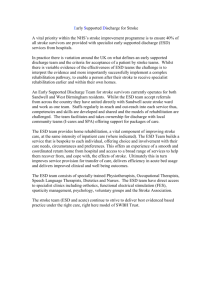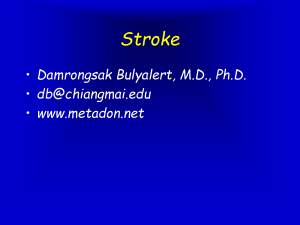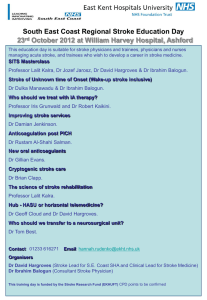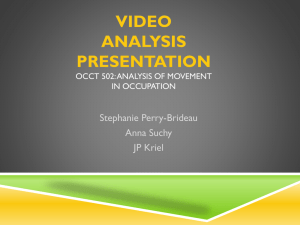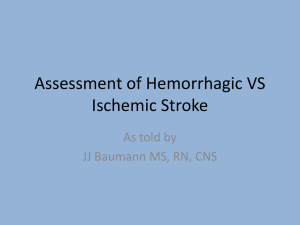Case Study cont - Bracknell and Ascot CCG
advertisement
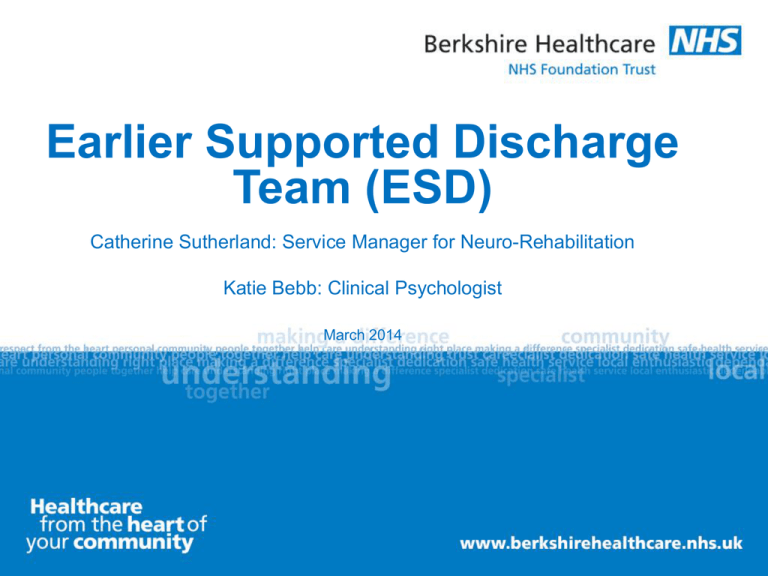
Earlier Supported Discharge Team (ESD) Catherine Sutherland: Service Manager for Neuro-Rehabilitation Katie Bebb: Clinical Psychologist March 2014 Outline of Presentation • Service Delivery • Activity • Outcome Measure results • Patient Feedback • Case Study Illustration Service Delivery • Provision of ESD to patients registered with a GP within Berkshire East CCGs • Referrals from secondary care hyper-acute and acute stroke units (LoS <25 days) • 6 weeks intensive rehabilitation within patients chosen environment in the community (eg. home, work, leisure pursuits) Activity During November, December and the early part of January, the patients admitted to WPH ASU were very poorly and not medically stable to be taken out by ESD. There were also a number of medical outliers. Activity cont/ The majority of referrals have come from WPH and RBH Activity cont/ Care Needs: 12/49 patients have received formal care needs: • 7 patients had reduced care needs by the point of discharge from ESD: • total reduction in 10 care calls a day between them • remaining 5 patients: • 3 patients were receiving care prior to their stroke, • 1 required as continuation of their care due to their stroke, and • 1 required ongoing care due to co-morbidities that had not been highlighted prior to their stroke. The Canadian Occupational Performance Measure (COPM) The Canadian Occupational Performance Measure is “an individualised measure of a client’s self-perception of problems encountered in occupational performance.” (Law et al, 2005). Patient Feedback: “Dear Sirs, I am writing to express our sincere thanks to your Stroke Support team who, took such good care of my husband. Following 6 weeks of intensive therapy he has regained most of his memory and has been given the tools to work on rebuilding his word finding. The girls were all extremely kind, caring and very professional.” “Q**** told me today that she had been very frightened of making phone calls in the beginning, because she was afraid of looking like a fool, but now she felt confident about knowing what to do and was enjoying chatting to old friends again.” Case Study Referral: • Mr R - 57 year old non English speaking man taken to local hospital with left sided facial weakness, left sided upper limb weakness, left visual problems • Previously a builder for 8-10 hours six days a week – would usually use ladders, work on a roof, drive to work • On point of discharge, MDT rang to say he would not be referred as he was unable to generate goals and family report was that he was back to baseline • Discharge co-ordinator discussed with therapists to agree with him to initial and potentially one off assessment to discuss recovery post-stroke, particularly with regards to vocational rehabilitation Case Study cont / Initial Assessment: • Carried out by Occupational Therapist, Clinical Psychologist and interpreter. His wife was present • Patient denied changes in any area including vision, mood, cognition, fatigue, weakness or functionally • Felt he could be back at work today Case Study cont / Questionnaires and pen and paper tasks: • Mood measures indicated no significant concerns but interpreter fed back that she thought he was downplaying his feelings • Montreal Cognitive Assessment (MoCA) – 22/30 (below cut-off) • Additional cognitive assessment – changes in visuo-spatial skills, upper left quadrant visual loss/inattention, slowed speed of thinking, impaired verbal fluency • Other changes noted over course of assessment: – decreased insight into changes, left facial droop, drooling, dysarthria, high level balance problems, lack of understanding of stroke, financial difficulties as unable to return to work, fatigue, emotional lability, difficulty crossing road safely Case Study cont / Functional Impact: • Building work uses visuo-spatial skills to put tiles on in the correct fashion, build accurate walls, make sense of building plans • Upper left quadrant visual loss/inattention meant difficulty in crossing the road safely, could impact on driving (increased blind spot) or mean he misses details on a job • Slowed speed of thinking can affect memory and taking in instructions for a job • Decreased insight into changes means compensation strategies are not used Case Study cont / Functional Impact: • Left facial droop, reduced range of tongue movement, reduced use of intonation and emphasis in speech led to reduced clarity of speech and combined with drooling could be embarrassing • High level balance problems making him unsafe up ladders or on a roof • Lack of understanding of stroke and how to prevent it • Financial difficulties as unable to return to work due to above • Fatigue causing difficulties with walking short distances • Emotional lability causing social embarrassment Case Study cont / Intervention: • Unable to see left facial droop in mirror – videotaped with consent and surprised • Provided with lip exercises and therapy to increase clarity of speech in conversation – videotaped to build insight into efficacy of strategies • Outdoor mobility practise • Accessing shops such as Wickes and Serco to carry out shopping tasks • Joint session with Stroke Association to explore financial support • Joint session with local college to practise wall building • Stroke education and prevention • Referred to ophthalmology Case Study cont / Intervention: • • • • • • • Referred for gym to build strength and fitness Supported with smoking cessation Blood pressure checked and explained Visual scanning exercises Advised to slow down Referral to English speaking lessons Risk assessment of using ladders/accessing roof Case Study cont / Outcome: • Joined son on job to repair roof – successfully completed • Able to explain changes in functioning since stroke and how he is managing those • Improved insight, articulation and implementation of strategies to increase clarity in conversation • Improved road safety • Improved gait for outdoor mobility • Improved exercise tolerance • Improved mood • Not smoked since stroke • Ophthalmology appointment attended Case Study cont / Outcome: • Successful shopping trips for building related materials • To build wall at college with physiotherapy • Awaiting benefits input COPM: Work: • Pre: 5/10 for performance, 5/10 for satisfaction • Post: 9/10 for performance, 9/10 for satisfaction Going outdoors and accessing shops: • Pre: 5/10 for performance, 5/10 for satisfaction • Post: 9/10 for performance, 9/10 for satisfaction Thank you Any questions?

